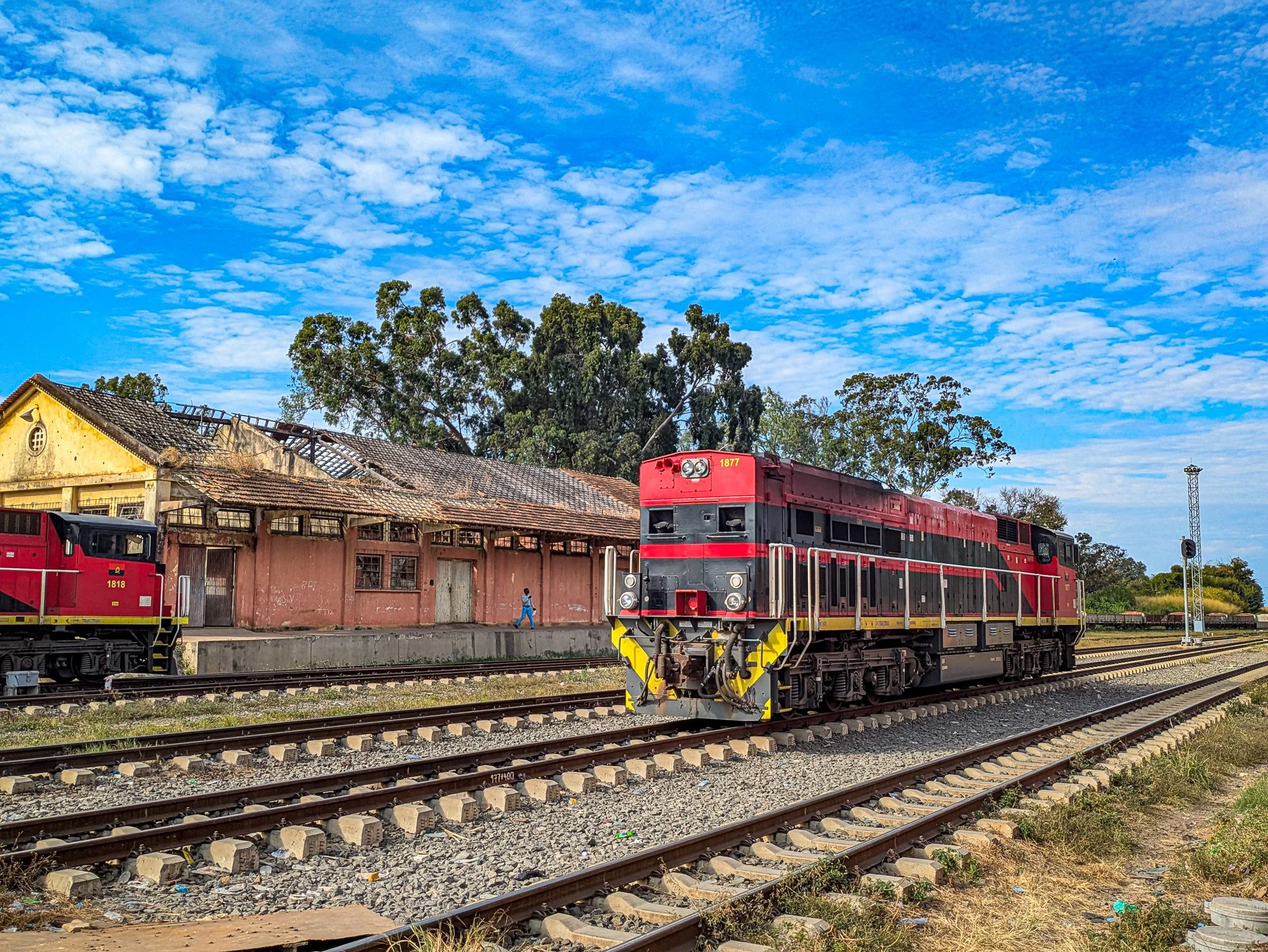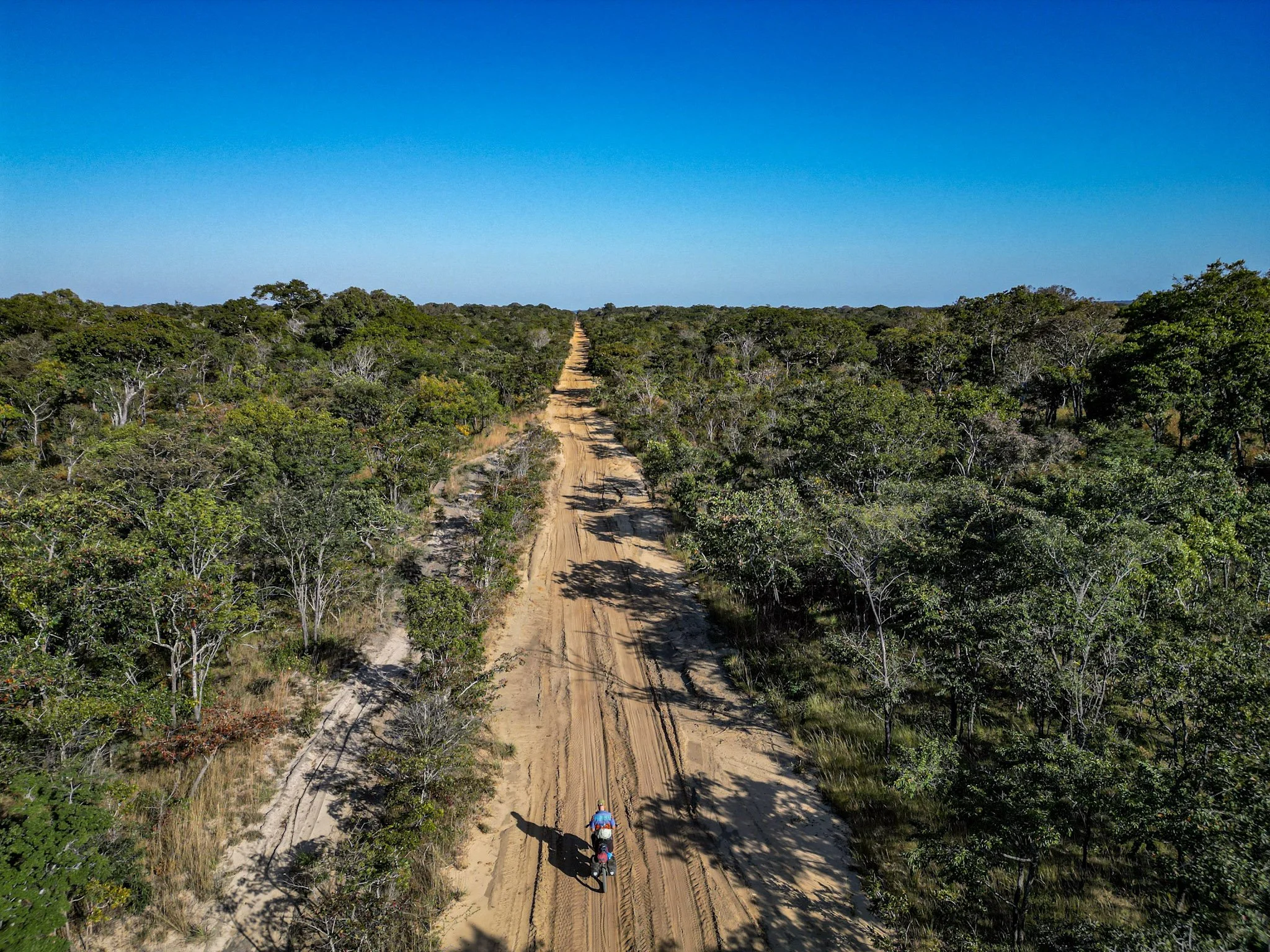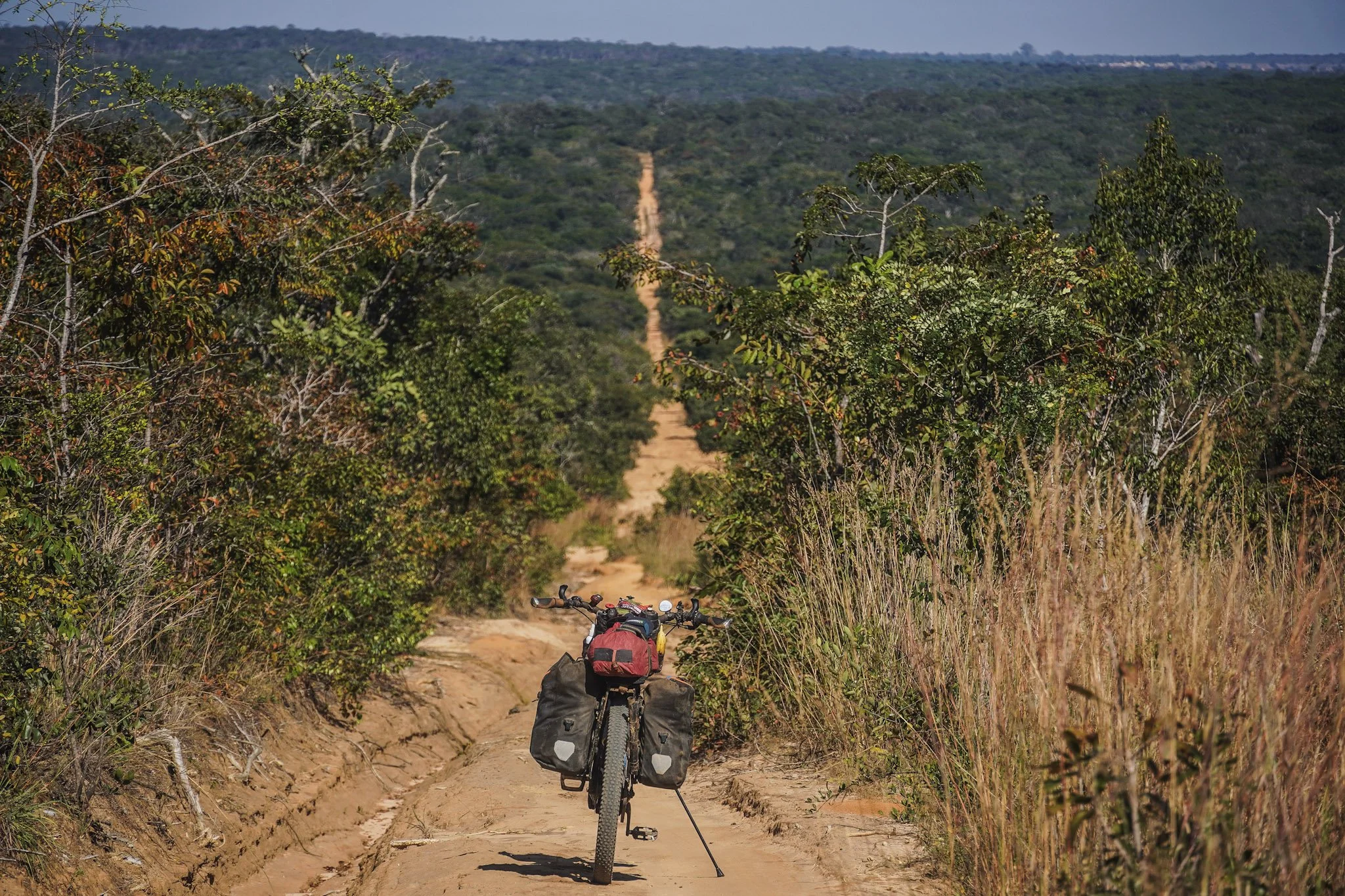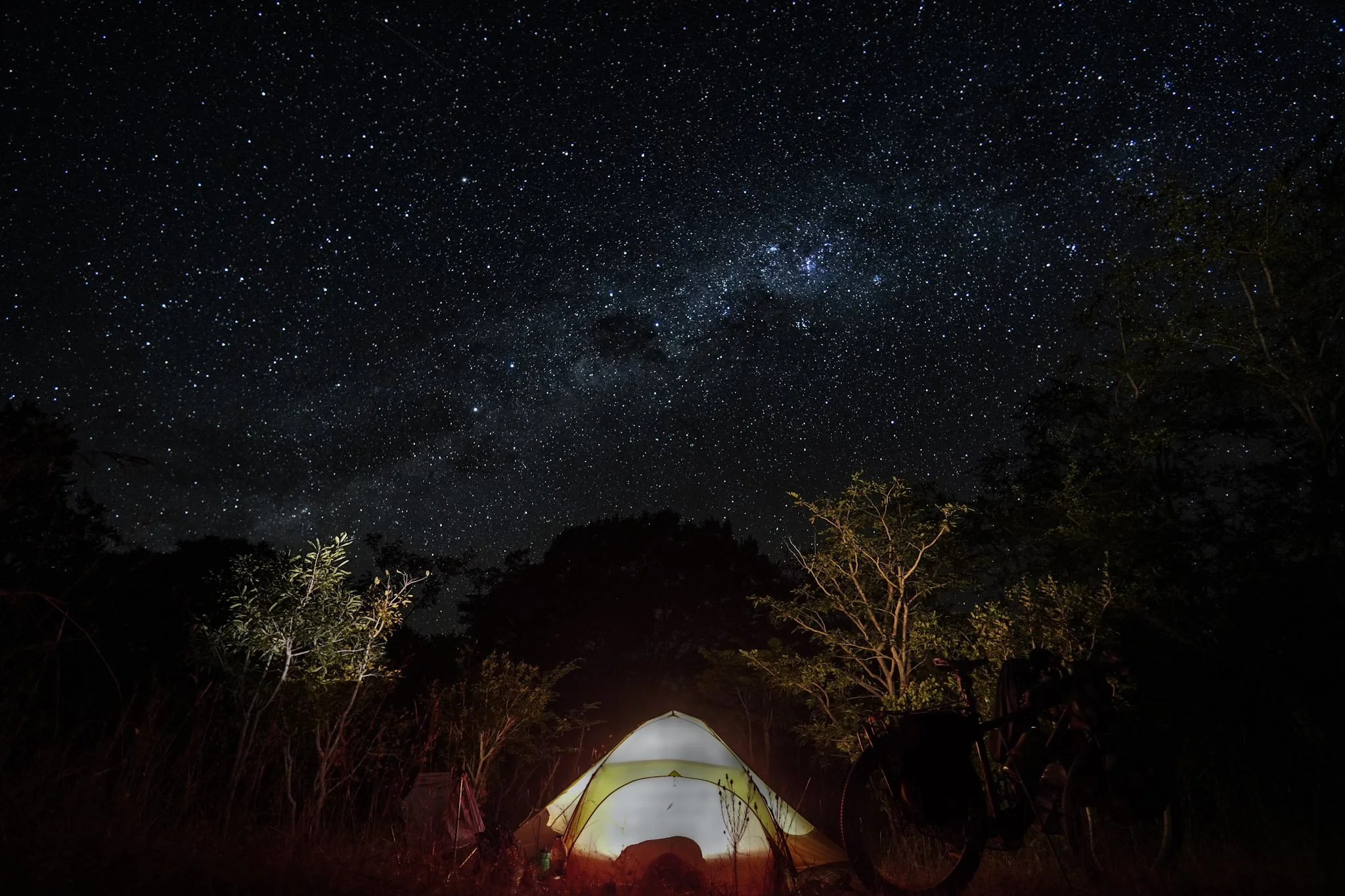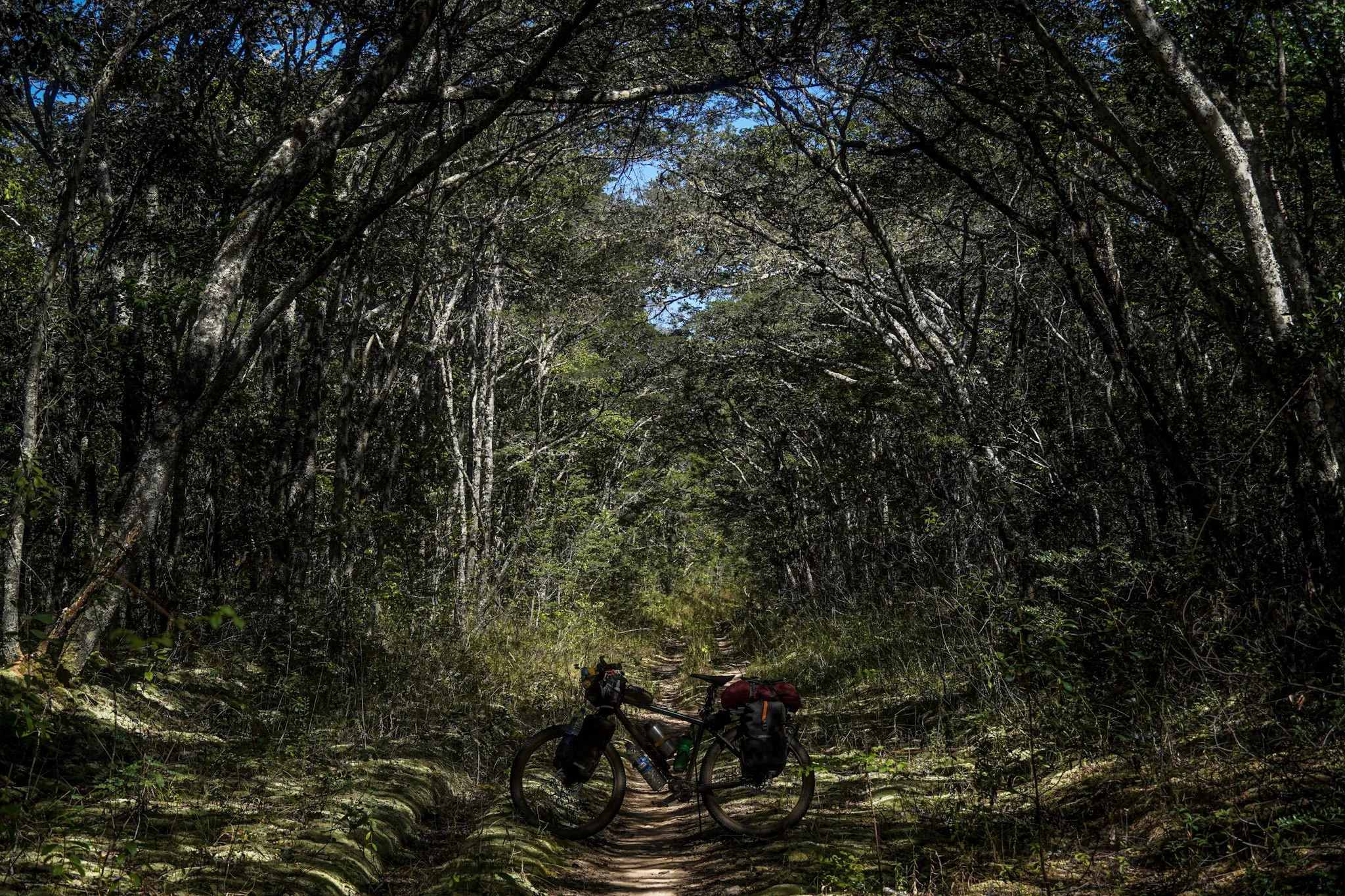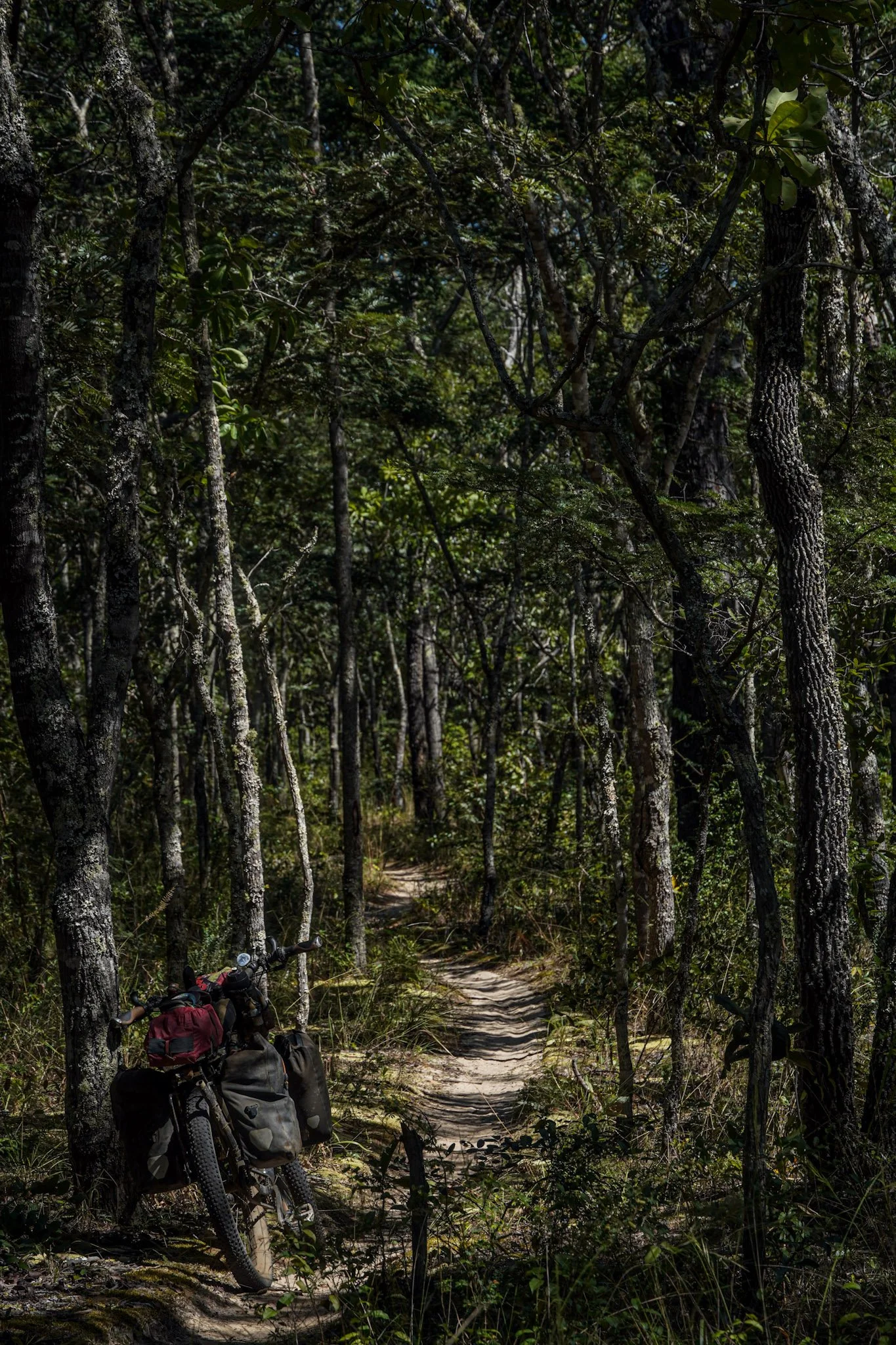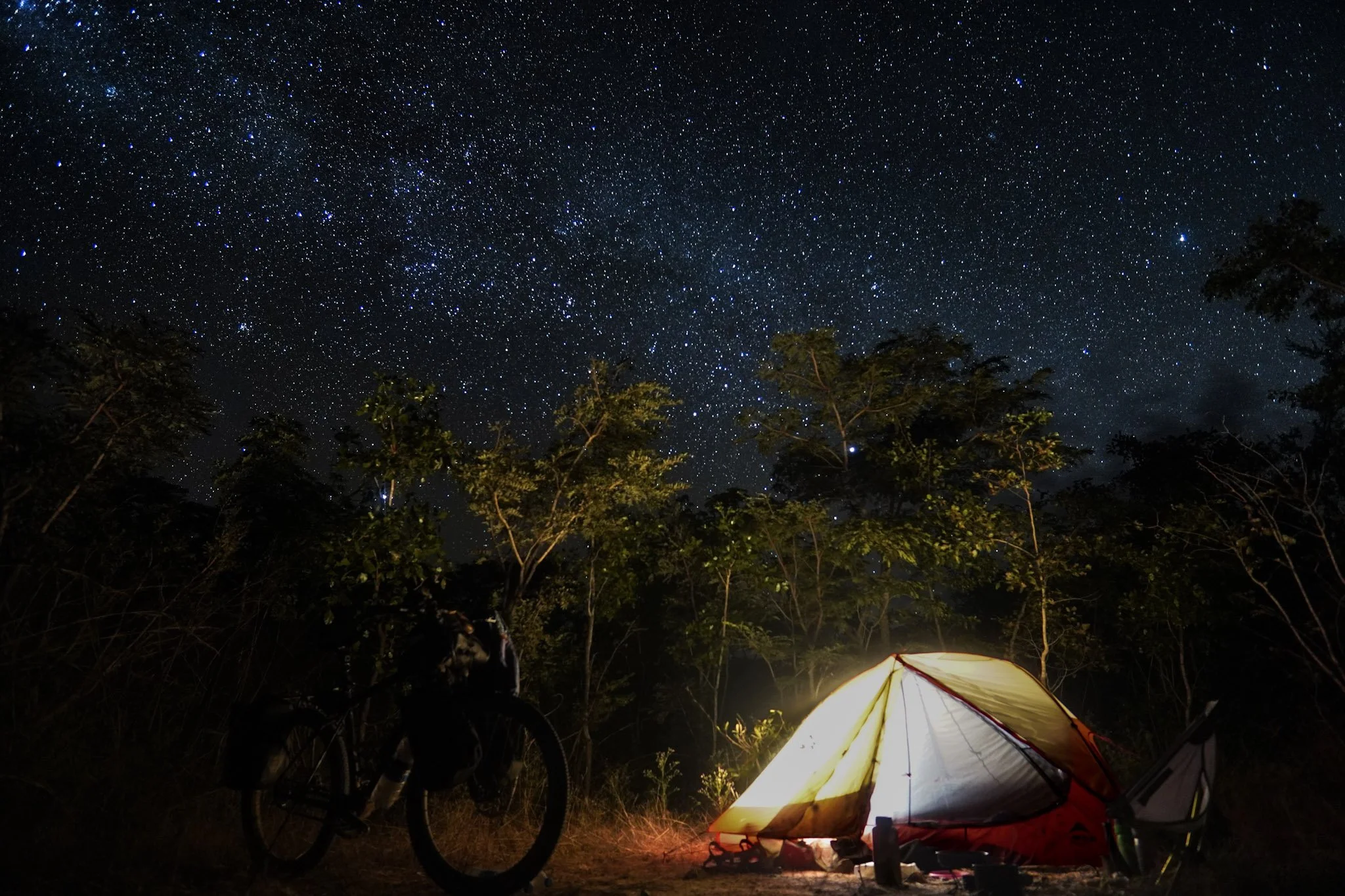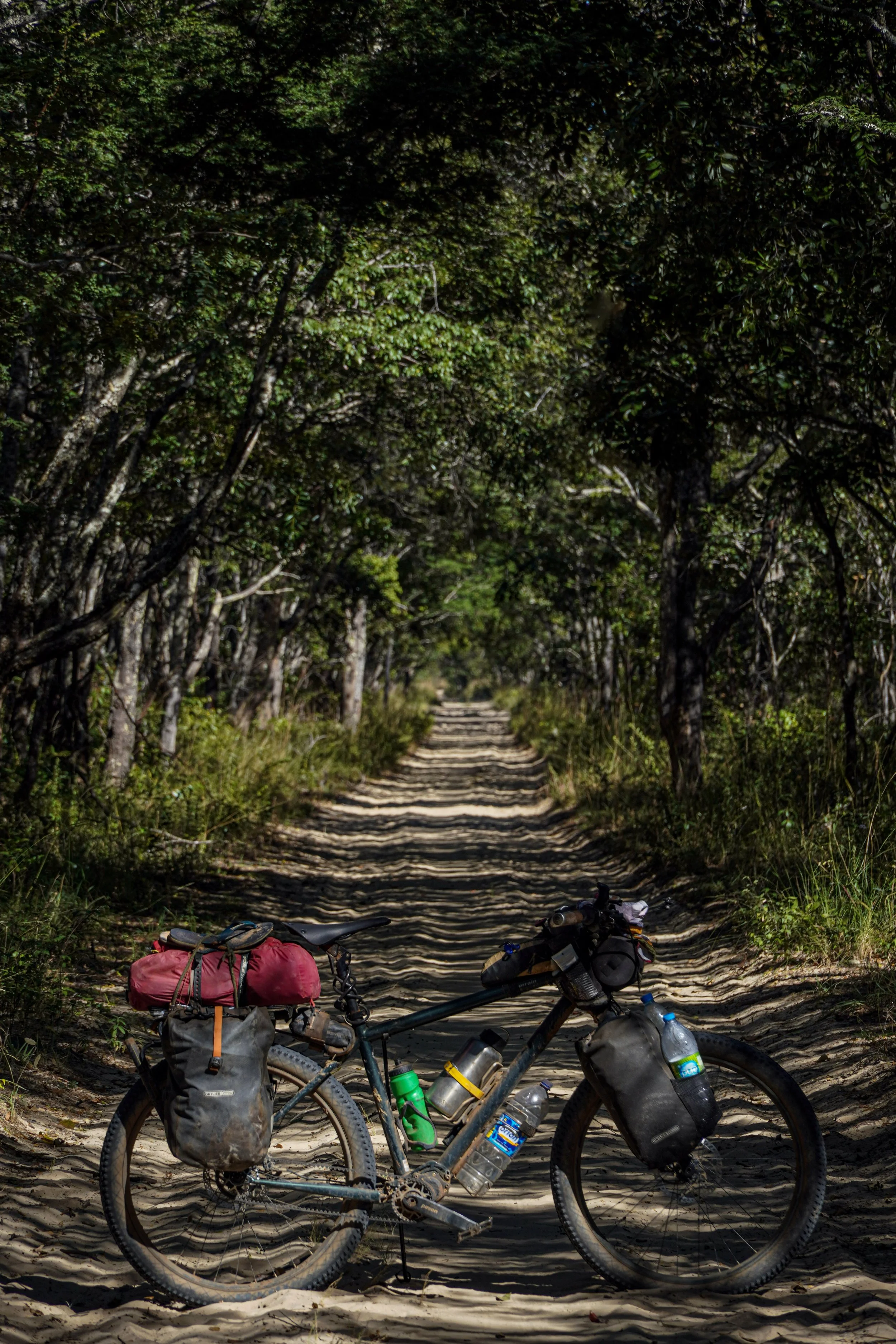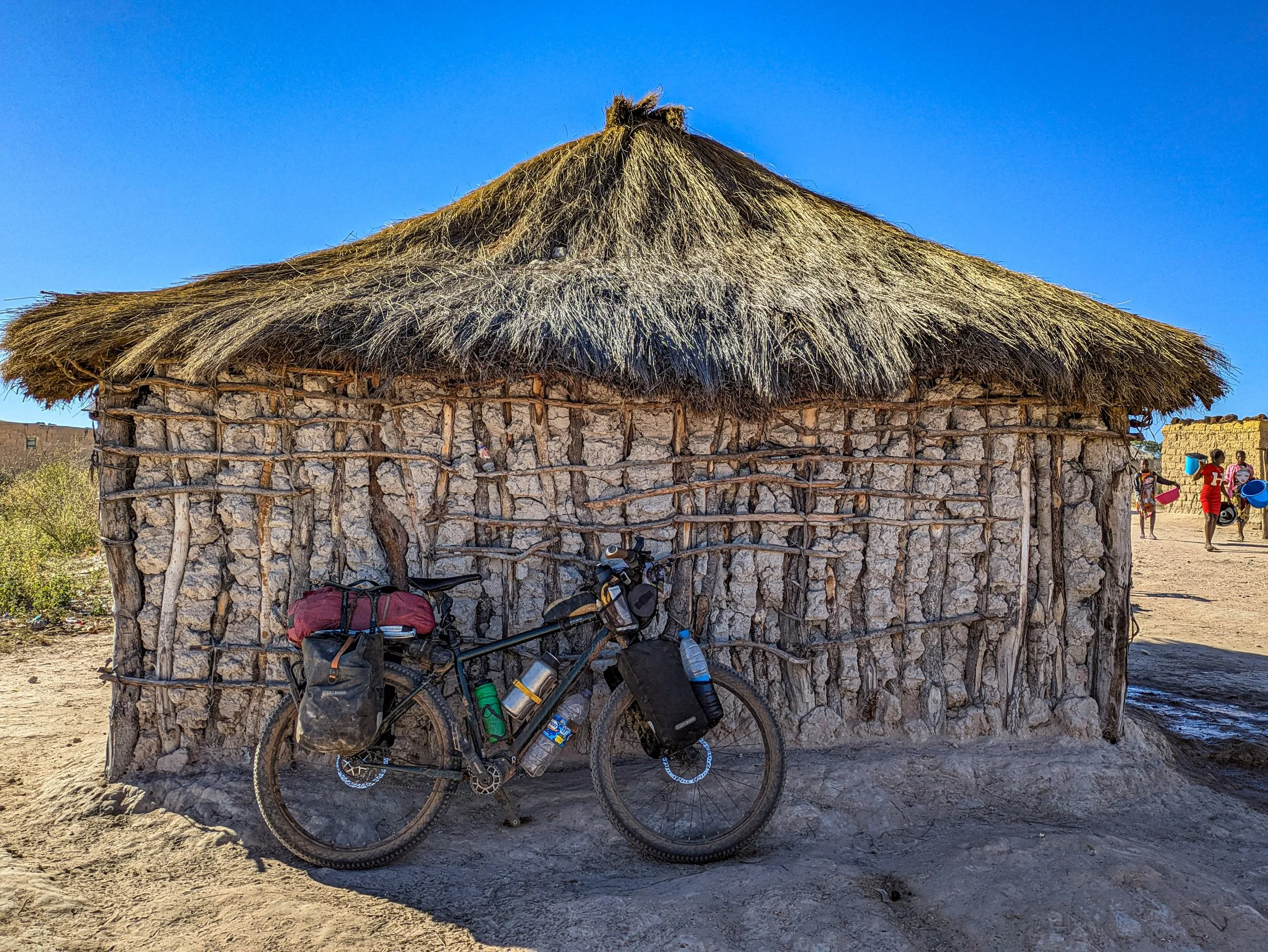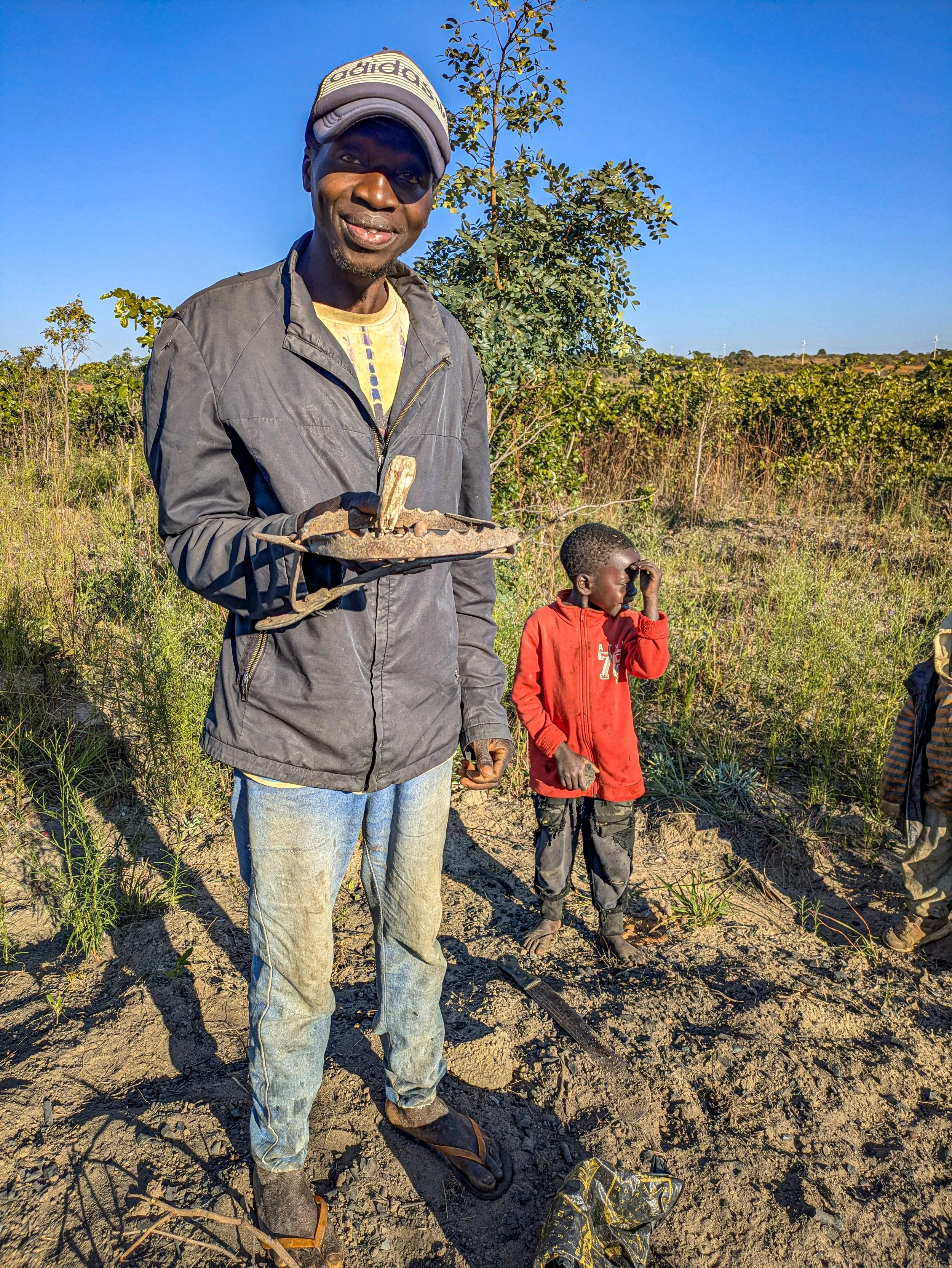Across Africa Part 9: Forest trails to Cuito
The train was an option if the trail became too sandy. The Benguela Railway, which I’d followed for the previous several hundred kilometres to reach Luena, continued west into central Angola. Running parallel to the railway - and clearly demarcated on all maps of the country - was the main road.
I’d read that the Chinese had spent almost $2 billion revitalising the railway, but by all accounts the nearby road - or lack of it - meant most people relied on the train to travel west from Luena.
Cuito, the provincial capital of neighbouring Bié Province, was my destination. Over the next week, I would cycle - and occasionally push - my way along 400 km of sandy tracks. The photos in this post cover that journey, appearing in chronological order.
Luena’s train station runs a daily service in both directions — west towards the Atlantic port of Lobito, and east — the way I had come — towards the DRC. Numerous small stations line the Benguela Railway, so I knew that if cycling became difficult for any reason, I could always catch the train instead.
First tank sighting on the outskirts of Luena. Hundreds of tanks were used during Angola’s civil war. This one sat at the side of the road between a market and primary school on my way out of the city.
The main highway connecting the provincial capitals of Luena and Cuito. What paved surfaces did exist in Luena were soon replaced by dirt tracks.
While Moxico province in eastern Angola is predominantly flat, the landscape began to change as I journeyed west into neighbouring Bié: the elevation rose, and the forested terrain began to undulate.
In total there are 67 stations on the 1866-km-long Benguela Railway. Most, like this one, are minor, but I knew there would always be a sign showing me how many kilometres to the next one, and if there was a station master present, an opportunity to refill my water.
Sardine sandwiches -a staple in this part of Africa when in the bush. Fresh bread and tomatoes are relatively easy to find in Angola. A bit of chilli, cumin and seasoning for a fuller flavour here.
Camped beside the railway. I had seen no vehicles other than a few motorbikes on the first few days out from Luena.
But plenty of stars in the sky at night. Camped at around 1300 m in elevation here. The dry season is Angola’s coolest.
A lot of the time I found myself on unmarked single track trails running through the forest. Some of these appeared to be old double-track trails that had become overgrown and reduced to a single trail by motorbikes; others looked to have been entirely created by people walking and motorcyclists forging a new path through the forest to avoid what was a sandier alternative running next to the railway.
So when I saw the motorbike tracks veering off from the main road into the forest, I decided to follow them, trusting that I would eventually re-emerge on the main track where it wasn’t so sandy.
Like most of Angola, large wildlife was predominantly hunted and killed during the civil war, so I didn’t expect to see any large animals in the forest, although I had heard rumours of forest elephants existing in these huge expanses of land where few people live.
It was quite common to come across armies of ants crossing the forest trails; a reminder when I pitched my tent to always check the ground carefully.
No moon and another clear starlit sky. There was almost no chance of rain at the end of May. The nights were quiet and peaceful, but I occasionally heard noises in the forest.
The same camp from the previous picture at day-break. I rarely ventured far from the track, and while I didn’t expect to see anyone passing, always insured my tent was hidden.
Some stretches of forest trail proved impossible to cycle. Soft sand meant pushing through stretches, then riding again before losing balance and having to push once more.
|A particularly sandy stretch awaited me one morning, but there was a river not too far away, so I knew that even if I had to push for several hours, I would at least find a water source should I run out of water.
A clearing in the forest as I approached the river.
Which turned out to be a great place to camp. The Cuiva River is a tributary of Angola’s largest river - the Cuanza, which I would go on to cross several times over the following weeks.
I had arrived a few hours before sunset the previous evening and decided I was unlikely to find a better spot to camp, so made my way down to a sand bank close to the bridge. No vehicle passed during the 18 hours or so I spent camped here.
Had my tyres been much narrower, it still would have been possible to ride this route, but it would have been far more challenging.
A short distance from that river camp the previous evening I arrived at Cuemba Falls, which flows over the same river. In many countries, such a beautiful waterfall would be a major tourist attraction, but in central Angola, with poor roads and little to no tourist infrastructure, it didn’t surprise me that there was no one else here.
Apart from some local kids, who came to say hello.
I spotted this old quarry close to the road a few hours before sunset. Hidden and peaceful.
And plenty of dead wood around for a small fire. I was camped at around 1500 m here, so nighttime temperatures were around 10-12C. Most nights I didn’t light a fire as there was too much vegetation around.
Light pollution was never an issue when photographing the night sky in Angola.
The morning after. The sandy tracks through the forest were no more from here as I rode the final 100km or so to the provincial capital of Cuito.
Creative kids. I saw more homemade toys in Angola than any other African country on this trip.
Miniature aid trucks and vehicles made from sardine tins, bottle tops and plastic bags. A lot of kids growing up in places where they are spoilt for choice with what toy to play with would benefit from a day or two spent here.
The dry season here is a time for house building. Most rural houses are made from timber, mud and straw, in ways that probably haven’t changed very much in the last century.
If it aint broke don’t fix it ….in other words - if something is working well, there’s no need to change or improve it. That’s easy to say from a position of wealth and privilege. People don’t necessarily choose to build homes like this, it’s more a case of using materials that are available from the land without spending money. Given access to more finance and choice of materials, most people wouldn’t choose to build like this, but use bricks and corrugated iron roofing.
In many rural areas people continue to live a life in connection with their environment, whether building houses or making fishing nets like this.
Fresh fish for sale. In the absence of refrigeration, most fish is often dried or fried to preserve it here.
My last camp before arriving in the city of Cuito was a memorable one - but not for the right reasons. I had pitched my tent in the dying light the previous evening, making do with a patch of flat land a short distance from a track. The night had been peaceful, although I was aware that there were villages not too far away.
Early the next morning, a young man approached and walked a short distance away from where I had just taken a pee. He picked up an animal trap embedded in the ground, baited with a small piece of cassava. Laughing, he demonstrated how it worked—perhaps not realizing that if I had stepped on it, it would have caused a serious leg injury!
A few hours later I followed directions to the compound of a conservation company on the outskirts of Cuito, where my Angolan contact had arranged for me to stay. No animal traps to worry about here!
The view from my window was that of the city’s new airport - the most incongruous sight I had seen in weeks. Newly constructed in 2019, and built by the Chinese. I think there are 1-2 weekly flights to the capital from here.
Aside from taking a rest, my main mission in Cuito was to seek a visa extension from the immigration office. My free 30-day stay in the country was soon to expire in a week’s time, so I requested a 30-day extension. With the assistance of a translator working for the conservation company, I was able to get that extension on the same day, giving me a total of 60 days in the country. This came as a massive relief, as I had read reports of people unable to extend their visa and being forced to take transport to leave the country.
Wine time. Cuito had another large supermarket catering to the 5% or fewer Angolans who can afford imported goods. Among those items was Portuguese wine, which I found surprisingly cheap — at least compared to prices back in the UK.
I found decent wine at £3-4 for a bottle, which is something you can’t do in the UK.
While wine is gaining popularity among affluent Angolans, beer remains far cheaper and more widespread for the majority. Angola has several brands, with Cuca being the most famous. At £0.25 a bottle, it’s probably amongst the cheapest bottled beers sold in Africa.
Cuito witnessed a lot of fighting during the civil war. This tank sat a short distance from where I stayed, and directly opposite the new airport.
Enjoyed this post? You can support my travels and ongoing content creation by clicking on the link below. It’s a great motivation to continue sharing. Thanks



